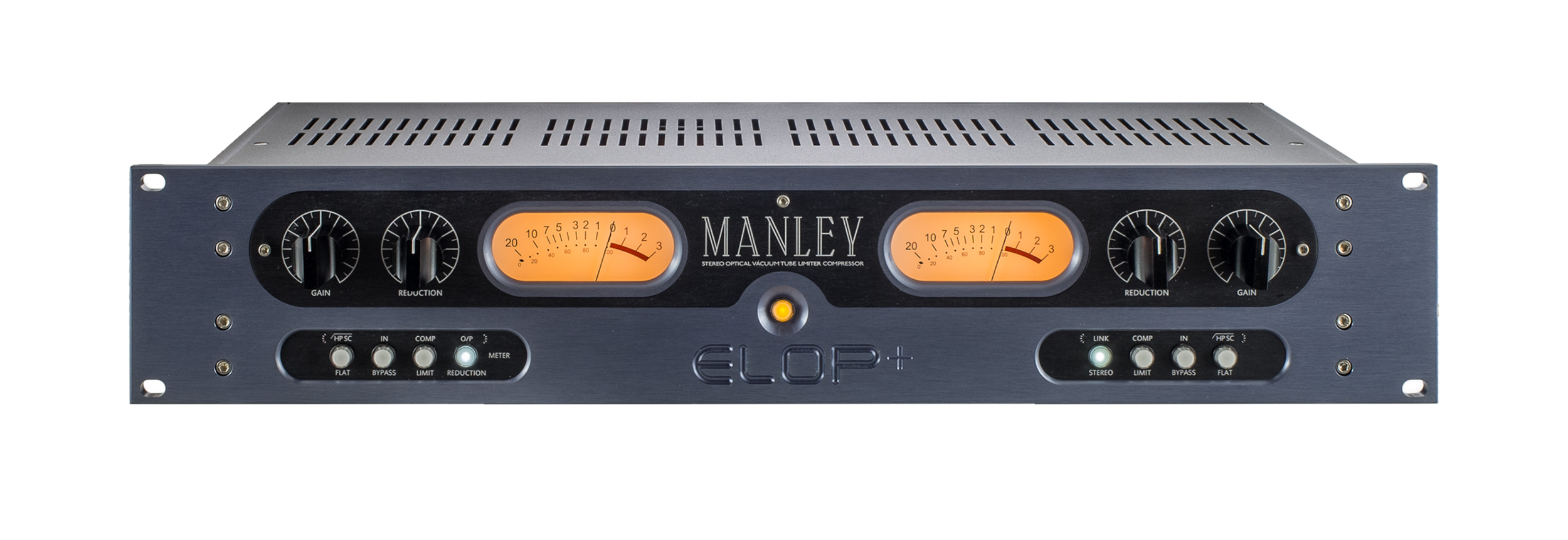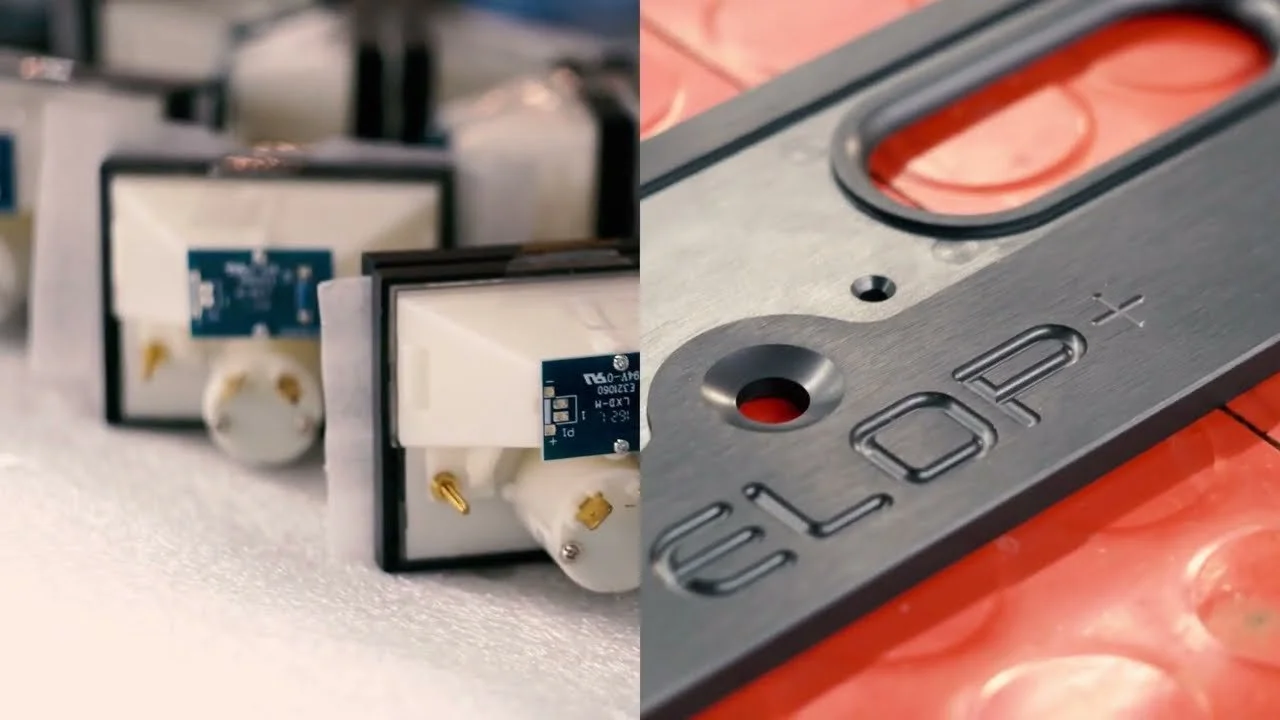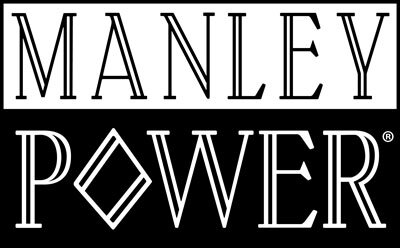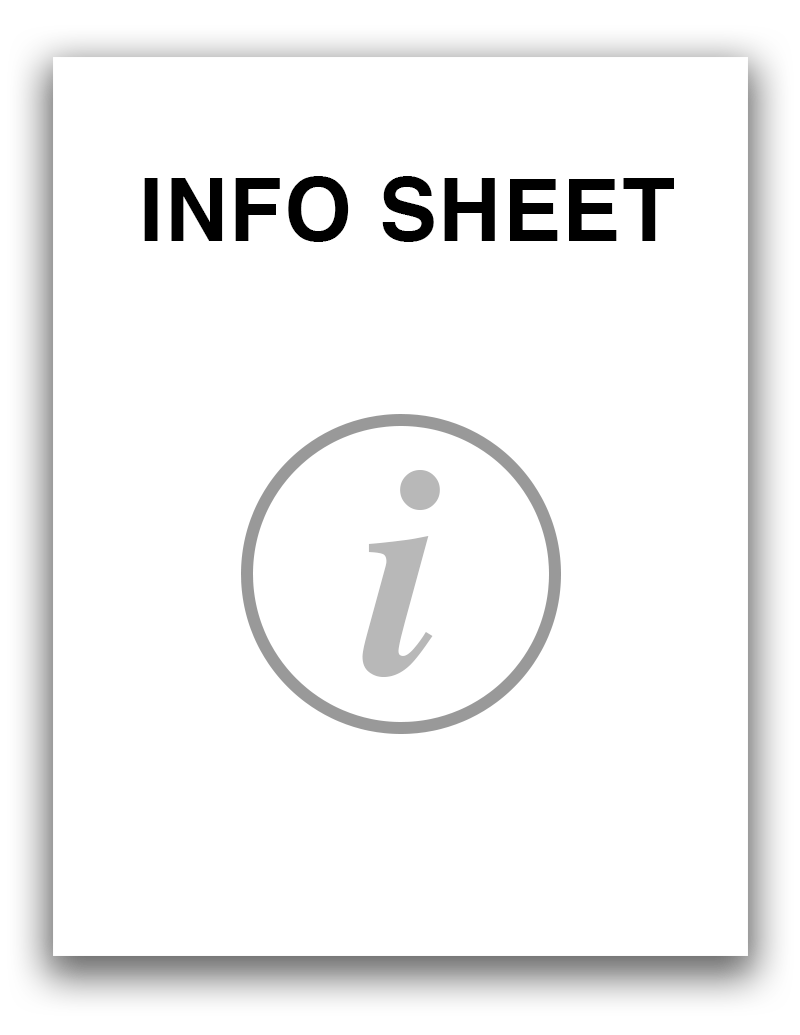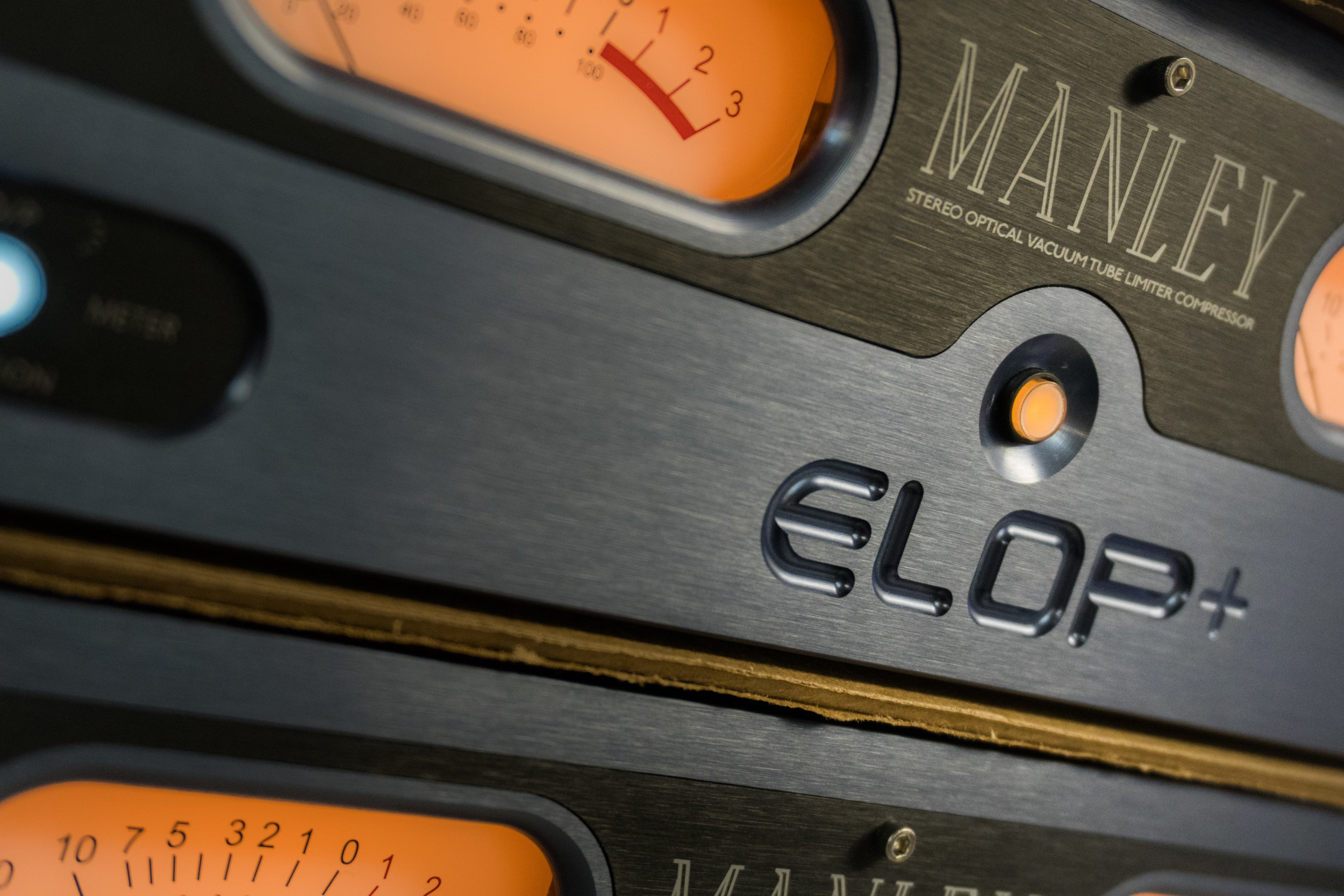
Since the early 1990’s, the Manley ELOP® stereo electro-optical limiter has been a tracking hero - effortlessly controlling dynamics on countless records around the globe and delivering the coveted classic, all-tube sound for which Manley Labs is known. This LA-2A type unit allows for deep amounts of limiting without loss of high frequencies: it literally works (and sounds) like a changing volume control.
The original was super easy to use, with supremely natural sound, and has often been the perfect choice for superstar vocals.
So how do you improve on something this good?
The original Stereo ELOP®, or Electro Optical Limiter, was one of the first Manley products from the early 1990’s. With its through-hole printed circuit board construction and hours of tedious hand-looming, it sure looked like 1992 inside the chassis.
The unit was scrubbed for buildability, embracing modern production techniques. Importantly, the power supply was upgraded to Manley's proprietary MANLEY POWER™ universal voltage Switch Mode Power Supply, which lowered the noise level and made the unit a true world-traveler.
We've also added a 3:1 compression ratio feature which opens up the doors to greater versatility, especially for 2-buss applications. With careful reference to our sonic past, we have deployed our highest performance vacuum tube line amplifier and White Follower output stage in this new version, all housed in a build-efficient chassis behind a drop-dead gorgeous precision-CNC-milled faceplate - all proudly made in America, of course. The new Manley ELOP+ is everything you love about our legendary ELOP, plus!
DRIVEN BY MANLEY POWER®
"I've tried all of the opto-style compressors, and this is by far my favorite. It's every bit as good as the classic compressors."
- Jake Sinclair, Producer (Sia, Weezer, Fall Out Boy) -

DETAILS
1. GAIN CONTROL. Available on L and R channels. Adjusts the gain of the audio channel, with unity at about the 7th marking (1 o'clock). Limiting usually requires some make-up gain to compare IN / BYPASS. The Gain control can also be used as the level to tape.
2. REDUCTION CONTROL. Available on L and R channels. Reduction adjusts the amount of limiting or compression in that channel. This could also be called "threshold". Turning this control clockwise increases the amount of limiting or compression.
3. VU METER. One for each channel, showing the gain reduction in dB when switch #7 is deselected, and showing output level in dB when switch #7 is engaged and illuminated.
4. HP SC CONTROL. Inserts a high-pass filter into the sidechain circuit, reducing the amount of compression or limiting below 80 Hz. Note: this filter is changeable to 150 Hz via an internal jumper. See the manual for details.
5. IN / BYPASS CONTROL. If the switch is engaged & illuminated, audio will pass through the limiter / compressor circuit and all front panel controls will function. If the switch is disengaged, audio still flows through the tubes in the unit, but at Unity Gain with no compression or limiting.
6. COMPRESS / LIMIT CONTROL. This switch allows the ELOP+ to use two different compression ratios. Offering either compression at approximately 3:1 when the switch is engaged and illuminated, or limiting at approximately 10:1 when the switch is disengaged.
7. METER SELECT. Allows the user to monitor either Gain Reduction (switch engaged & illuminated) or Output of the unit (switch disengaged).
8. POWER SWITCH. Glows DIM when an IEC power lead is connected to the unit. This indicates that the ELOP+ is in STANDBY mode. Engaging the switch takes the ELOP+ out of standby mode and into warm-up mode (flashing VU meters, brighter glowing power switch). This lasts 30 seconds, after which the MUTE relays will lift and the VU meters will stop flashing.
9. LINK / STEREO FUNCTION. When the LINK switch is engaged and illuminated, the ELOP+ applies the same amount of gain reduction to both the L and R channels. This is done to prevent image shifting that can occur if each channel is compressed individually. We suggest that when in LINK mode both channels have controls set the same. Please see the ELOP+ manual (below) for more details.
SPECIFICATIONS
10:1 Limiter and 3:1 Compressor ratios
All-tube audio path uses 5751 (gain) and 6922 (White Follower Output) dual triodes each channel
Balanced Manley IRON® transformer-coupled XLR Inputs
XLR impedance-balanced outputs
BYPASS switches and AUTOMUTE with warm-up delay
Large illuminated VU meters read Gain Reduction or Output levels
STEREO LINK
Side-Chain High-Pass Filter
Standby Power Consumption: 0.5 Watts
Universal internal power supply operates worldwide 90-250V~AC 50/60Hz
ALL-TUBE audio path using a 5751 for gain, 6922 White Follower output tube (one each per channel)
Silent Conductive Plastic GAIN control.
Balanced MANLEY IRON Transformer coupled XLR input.
Input impedance: 14 kOhms
Maximum input level: +18dBu or 4.8V RMS @ 0.01% THD
Hi-current White Follower Impedance Balanced XLR output.
Output impedance=150 Ohms
Maximum Output with 100 kOhm load= +30dBu @.009%THD+N, BW 22Hz-22Khz, 1Khz sine
Maximum Output with 600 Ohm load= +20dBu @.015%THD+N, BW 22Hz-22Khz, 1Khz sine
Output Headroom (Referenced to +4dBu)= 26dB
Frequency Response= -0.15dB @ 10Hz, -0.1dB @ 20KHz
Total Harmonic Distortion (1kHz sine @ +4dBu, BW 22Hz-22kHz) = 0.004 % THD+N
Noise Floor Limiter Bypass= -90dBu (BW 22Hz-22kHz)
Noise Floor Limiter Engaged= -88dBu (BW 22Hz-22kHz) Input set to Unity gain
Dynamic Range= 118dB
Signal to Noise Ratio = 92dB (Referenced to +4dBu)
Bypass mode = Signal goes thru ALL-TUBE audio path (Bypasses limiter) this is not a “hardwire bypass”
Unity Gain= Set Input Attenuator @ 1:00 o’clock
Maximum Gain= 13 dB
Common-Mode Rejection Ratio (CMRR)= 77dB (BW 22Hz-22Khz, +4dBu, 1Khz sine)
Limiter Ratio= 10:1
Compressor Ratio= 3:1
Limiter: Attack= 15ms
Limiter Release= 200ms
Compressor: Attack= 75ms Release= 200ms
Attack/Release times measured under following conditions: 4dB of Gain Reduction, 1kHz sine, +4dbu Input level, to 63% of total.
Attack times are faster with higher input levels and heavier gain reduction. Typically for complete release, release times increases up to a couple of seconds, depending upon the amount of previous reduction.
Maximum Limiting (with +4dBu 1Khz sine)= 12dB
Maximum Compression (with +4dBu 1Khz sine)= 6dB
Side-Chain High Pass Filter= 80Hz (Internal user adjust jumper to 150Hz)
Automute warmup delay=30 seconds
Operating mains voltage= 90 to 254 VAC (internal universal power supply)
Mains voltage Frequency= 50-60 Hz
Power consumption= 26 Watts
Dimensions= (w,d,h) 19" x 7 x 3 1⁄2" (occupies 2u)
Unit weight= 9.5 Ib
Shipping weight= 10 Ib

REVIEWS
"As a reviewer, I find it really hard to be critical of the ELOP+, which says a lot...I have to give the ELOP+ a big thumbs up."
- Matt Houghton, Sound On Sound (June 2020)
"This limiter is in the ‘subtle and discreet’ category, but reinforces the overall beauty of the sound…"
- KR Home Studio, October 2018 (French)
"No other device can limit the heavy dynamics without crushing it other than the ELOP+ in the heavy EDM genres...this thing is ludicrous on vocals too…buttery smooth."
- Manley Customer ‘Johnny Massacre’
"I've tried all of the opto-style compressors, and this is by far my favorite. It's every bit as good as the classic compressors."
- Jake Sinclair, Producer (Sia, Weezer, Fall Out Boy)
“Ce limiteur agit donc dans la catégorie du subtil et du discret mais renforce systématiquement la beauté du son…”

DOWNLOADS
An ELOP+ story from EveAnna Manley:
"You guys all know Ross Hogarth! Well, he was one of our original ELOP users. He has had his Manley ELOP for at least 20 years and he uses it daily. So of course he was the best guy to work with to make a new ELOP. So we took units back and forth to Ross so that he could compare the new creation with his vintage reference one.
At first, he returned the first one and declared it was way too grabby. So we implemented a testing and batching regime in order to select the VACTROLS to fall into a narrow range similar to his unit. The VACTROL is the brand name for the element we use that has the LED and the LDR - that is, Light Emitting Diode, or light source, and Light Dependent Resistor. This unit works like an LA-2A where the light source makes a resistor change its value and it is configured as a simple voltage divider or volume control. That is why this type of limiter is so clean, as it is working just like you were turning the volume control or moving a fader up and down. You do not get all the complex distortion products like you do with tube limiters, or FET limiters, other units that have an active element changing its gain.
So then after we got the attack and release and timing constants to match his cherished unit, we then worked on the tonality of the unit, and Ross had a complaint about the bass. So he gave the beta testing unit back to EveAnna and she knew exactly what to do. She removed the output transformers from the new unit and gave it back to Ross transformerless. Because his old unit was transformerless! And BLAM. That was the magic. Solid punchy bass once again.
Manley really worked on referencing the original vintage sound of the early ELOPs, the ones that have made so many hit records. And they nailed it with Ross Hogarth’s help."
FREQUENTLY ASKED QUESTIONS
FAQ #1 – This thing isn't working. I just bought it. For this amount of money, it needs to function.
OK, listen up: the XLR INPUT is TRANSFORMER-COUPLED so that means you HAVE TO have something connected to all of the pins.
PIN 1: GROUND
PIN 2: HOT (+) POSITIVE
PIN 3: COLD (-) NEGATIVE
You cannot "float" Pin 3. You can GROUND it if you are driving it from an unbalanced source. But you cannot hook it up to "nothing".
Pay attention when interfacing with some of these interfaces like your Apollo. If you are using TRS - XLR cables, make sure that it is wired:
TRS TIP = HOT (+) to XLR Pin 2
TRS RING = COLD (-) to XLR Pin 3
TRS SLEEVE = GROUND to XLR Pin 1
or
TS - XLR cable, make sure it is wired:
TS TIP = HOT (+) to XLR Pin 2
TS SLEEVE = GROUND to XLR Pin 1 AND Pin 3
FAQ#2 - Ive just received the elop plus and i see that it has the turn on button red i itthought yellowor orange.
The orange switch pushbutton went obsolete and was replaced by a red one instead. There is no change in functionality. Carry on and make some great music!
FAQ#2a - Can you guys sell me a yellow button? I hate this red button if i knew this i would not even buy this equipment
Like I said, the old switch went obsolete and we had to change to another switch and the PCBs had to be redone to work with the new switch and the old switch and new switch are not interchangeable and this new switch is not available with a yellow switch cap or yellow LED in the new style anymore or else I would have kept a yellow color to avoid drawing your displeasure.
Please enjoy your wonderful Manley ELOP+ and try to be as inclusive and appreciative of switches of all colors as we are with people of all colors.

